Art & Exhibitions
David Ebony’s Top 10 New York Gallery Shows This Fall
Great shows of work by Mike Kelley, Dana Schutz, and Julia Bland are on view.
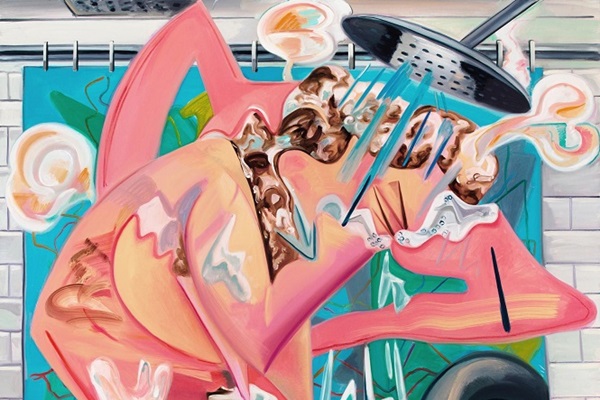
Great shows of work by Mike Kelley, Dana Schutz, and Julia Bland are on view.

David Ebony


Mike Kelley, Kandor 4, 2007.
Photo courtesy Hauser & Wirth.
1. Mike Kelley at Hauser & Wirth, through Oct. 24.
Three years after his untimely death in 2012, age 57, Mike Kelley continues to grow in stature, thanks to spectacular exhibitions like this one, featuring 30 sculptures and installations, a number of which have never before been shown in the U.S. Culled largely from the artist’s estate, the exhibition focuses on the “Kandor” series of works inspired by Superman comics. Named for Superman’s hometown on the planet Krypton, Kandor is elaborately rendered in many works here as a futuristic city in miniature, made of colorful resin skyscrapers, sometimes placed in bell jars or lightboxes, and illuminated from below.
Whether or not Kelley identified with Superman in terms of his public heroics and private loneliness, the artist obsessively pursued the subject for the last eleven years of his life, producing an astonishing array of Kandor pieces, from Pop-art inflected lenticular print panels, to an anarchic film, á la Jack Smith, Extracurricular Activity Projective Reconstruction #36 (Vice Anglais), which are among the highlights of the show. Occupying much of the main gallery, Kandor 10B (Exploded Fortress of Solitude), is a huge, black cave-like structure that you can enter into (once you’ve donned white cloth shoe coverings). Harboring a fake-jewel-encrusted grotto, the haunted den suggests a private abode for introspection, as well as a sequestered place to explore all sorts of psychosexual obsessions.
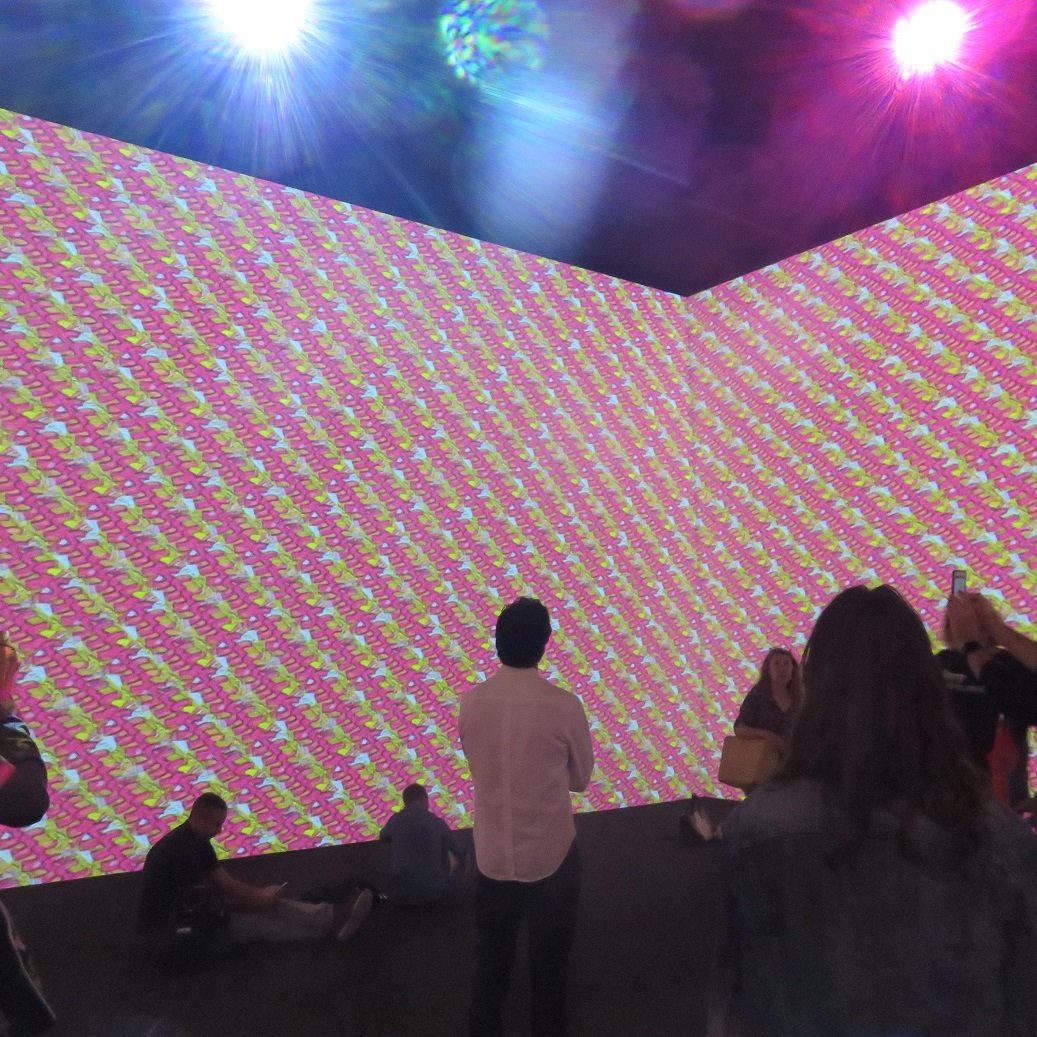
Installation view, Christian Marclay, “Surround Sound,” 2015.
Photo courtesy Paula Cooper Gallery.
2. Christian Marclay at Paula Cooper, through Oct. 17.
Is it possible to express sound in purely visual terms, in a darkened room with only filmed images of words that designate sounds, like “boom,” “pow,” “pop,” in colorful, supergraphic streams of frantically rhythmic animation? Christian Marclay makes a strong case for it in Surround Sounds, his highly anticipated follow-up to his award-winning, and mind-blowing video The Clock (2011), which captured time itself in fast-motion images of clocks, watches, and references to time in famous Hollywood films, projected in real time, over the course of 24 hours.
The new film, a multichannel video loop covering four walls of a darkened gallery, is similarly hypnotic and thoroughly engaging as an immersive experience. Despite the silence, the work has the feel of a rock show. Marclay offers a special challenge to consider sound only visually, as amplified signage. The silence is intentionally unnerving in Surround Sounds. “In silence we can think about sound,” Marclay says in a press statement. “Silence is the negative space that defines sound.” A side gallery contains a selection of recent paintings on paper, featuring words referencing noises, in case you would like to hang some sounds on your wall.
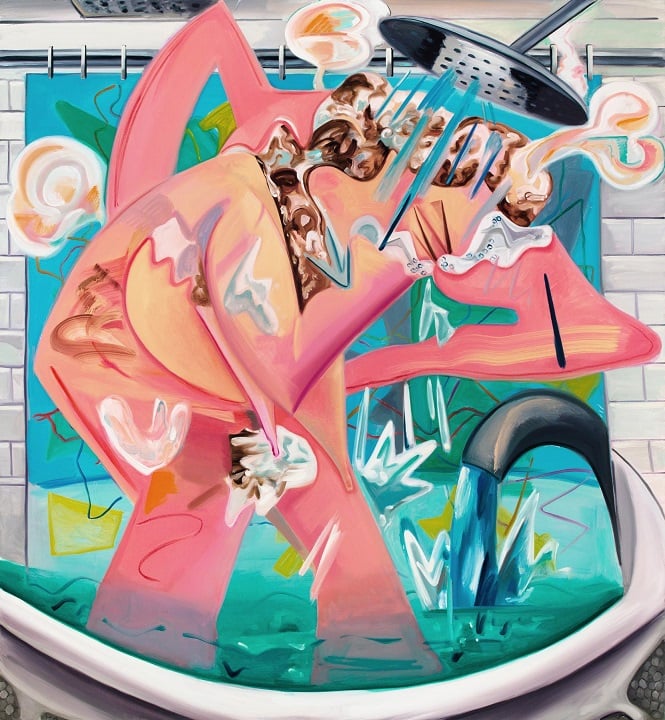
Dana Schutz, Slow Motion Shower, 2015
Photo courtesy Petzel Gallery
3. Dana Schutz at Petzel, through Oct. 24.
In her paintings of recent years, Dana Schutz has developed and refined a unique faux-Cubist space that accommodates a wide range of expressive flourishes. And it is perfectly adaptable to her wild thematic adventures. For this flamboyant exhibition, “Fight in an Elevator,” Schutz delivers a particularly tight and effective group of canvases and works on paper centered on a very clever concept, one that is personal yet could have universal resonance—human conflict in confined spaces, public and private.
The theme is brilliantly realized in works like the mural-size Shaking Out of Bed, whose imploding details of the bedroom convey a particularly agitated morning. In the show’s title work, fragments of six bodies tussle in a claustrophobic space as the shiny metal doors of the elevator are about to close. A particularly well-painted leg wearing a blue high-heel shoe apparently belongs to one of the more aggressive combatants. Among the best works on view, Slow Motion Shower, shows the confines of a shower stall inhabited by a nude woman, whose contorted limbs and features conjure certain Francis Bacon figures, as well as his iconic Jet of Water (1988). Water is a notoriously difficult subject for a painter to paint, and Schutz’s rendering of it here is imaginative and exhilarating, as refreshing as a warm shower.
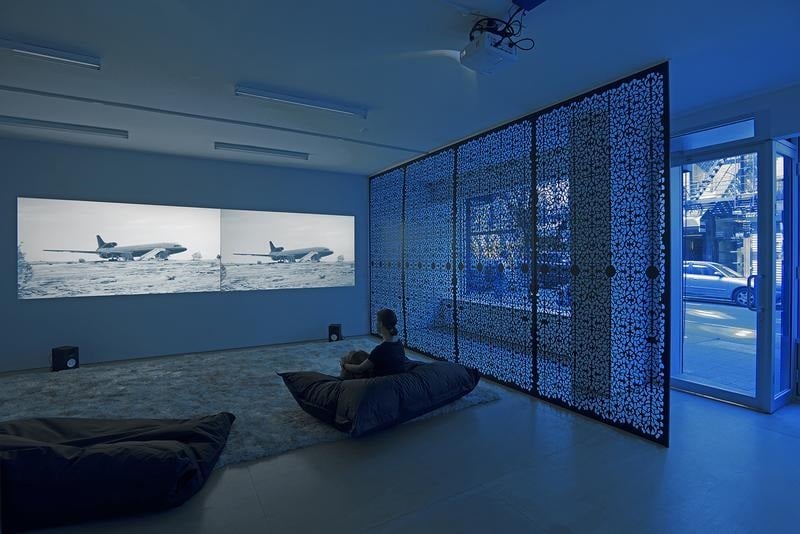
Installation view, Sue de Beer, “The Blue Lenses,” 2015.
Photo Bill Orcutt; courtesy Marianne Boesky Gallery.
4. Sue de Beer at Boesky East, through Oct. 25.
New York artist Sue de Beer inaugurates this Lower East Side venue with “The Blue Lenses,” an evocative installation that touches upon hot-button issues ranging from Middle East politics to visual perception and identity. With windows covered in blue translucent vinyl, the exhibition space is bathed in an ethereal blue light. Referencing Islamic architecture, black-painted floor-to-ceiling aluminum screens featuring intricate, geometric cut-out patterns, divide the space. In one area with a plush carpet and large pillows, De Beer invites viewers to relax and be seduced by her new, approximately 20-minute, two-channel video, The Blue Lenses. Several photo stills from the film hang in a rear gallery.
The film is supposedly based on a Daphne du Maurier short story, “The Blue Lenses,” about a woman given surgery to restore her vision, and when the bandages are removed she sees people with animal heads. De Beer’s version is vastly different. Shot in Abu Dhabi, the noir-like film follows a very loose narrative, featuring several characters: one is a shoplifter and con artist, and another is a young woman in a pink party outfit doing a striptease next to a fake Christmas tree. It’s a jarring mix, but provocative and captivating.
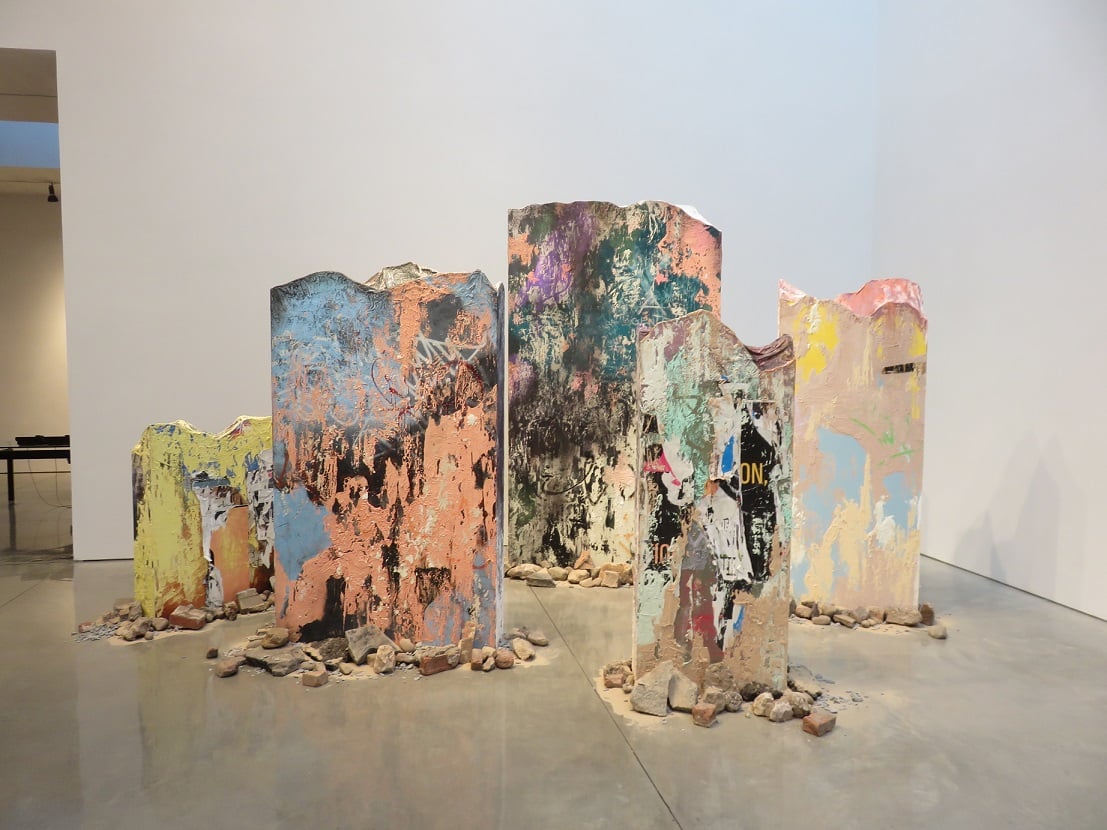
Installation view, “José Parlá,” 2015.
Mary Boone Gallery; Photo D. Ebony.
5. José Parlá at Bryce Wolkowitz and Mary Boone, through Oct. 31.
Lately, Miami-born New York artist José Parlá has received a great deal of attention for his massive public murals and outdoor sculptures. “Surface Body / Action Space,” a sprawling, two-part gallery exhibition of recent abstract paintings and sculptures offers a clear overview of where he has been, and where he is going—his roots and achievements thus far. On view at both venues are resplendent examples of his abstract paintings in which he melds the high-minded principles of American Abstract Expressionism and European Tachisme with street-smart graffiti art.
The richly textured surfaces of the works, the gorgeous colors, and the fluid calligraphic imagery approach examples of the best Color Field painting in terms of unabashed sensuousness and radiance. Parlá makes much of his Cuban heritage in his painted concrete sculptures that resemble crumbling city walls. These graffiti-embellished contemporary ruins serve to reinforce the connection of the artist’s endeavor to the street, to societal concerns, and urban decay, which prevents these sumptuous works from being misperceived as mere decoration.
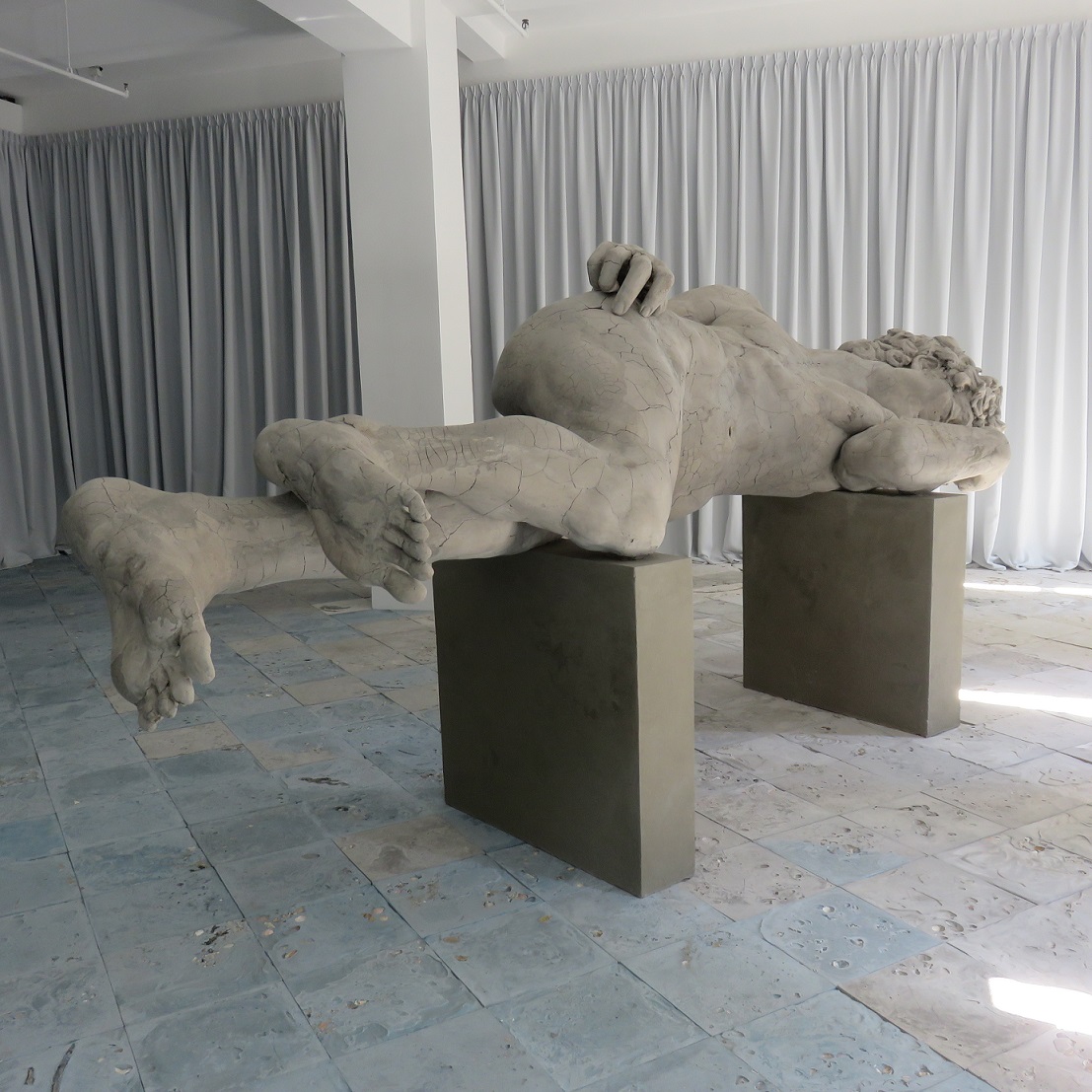
Installation view, “Adrián Villar Rojas: Two Suns,” 2015.
Photo courtesy Marian Goodman Gallery.
6. Adrián Villar Rojas at Marian Goodman, through Oct. 10.
What will the world look like thousands of years from now, when visited by alien beings? This is the question Argentine artist Adrián Villar Rojas asks in this unforgettable exhibition titled “Two Suns.” Entering the darkened space of the gallery, with walls covered floor-to-ceiling in billowing gray curtains, induces a slightly claustrophobic feeling. Initially one feels sorry for the gallery employees, sequestered away as they are behind the curtains.
After a while, the viewer feels captured, as if stuck inside the changing room of a high-end department store. It’s a haunting effect, and Villar Rojas has created a rather eerie environment that draws attention to the meticulously installed ceramic floor. Purposely distressed, the tiled floor is encrusted with countless bits of detritus, like crushed soda cans and rope, remnants of long-lost human civilization. Cautiously heading down the long, narrow, cloth-covered dark corridor leading to the rear gallery, one is gripped by a sense of foreboding. It is something of a relief to find at the other end, a giant reclining nude statue, raised above the floor on two gray, boxy supports. In Villar Rojas’s imagination, it is the last artwork remaining on earth: Michelangelo’s David, apparently taking a nice, long nap through the ages.
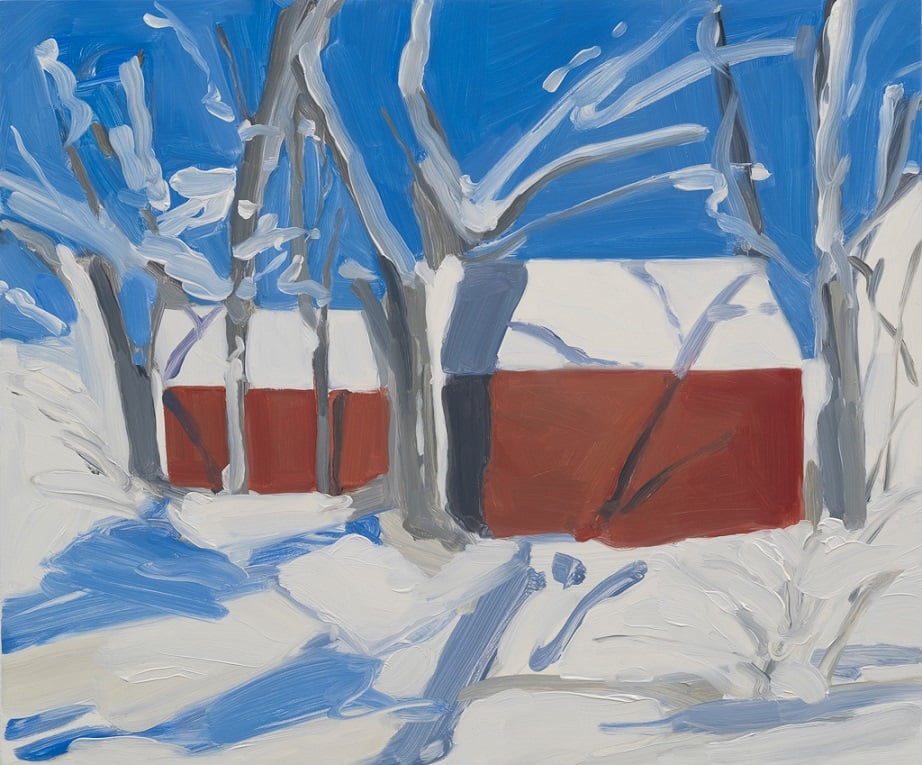
Maureen Gallace, Ice Storm, Easton (with Robert), 2015.
Photo courtesy 303 Gallery.
7. Maureen Gallace at 303, through Oct. 31.
In the midst of today’s torrent of bombastic painting, aimed to clobber you over the head and knock you out, Maureen Gallace’s quietly introspective exploration of painting’s metaphysical properties and prospects can be both shocking and moving. The small scale of these unpopulated landscapes and still lifes are rarely more than twelve inches in any dimension, and, like the work of artists she admires, such as Giorgio Morandi and Albert York, they require close inspection. Here, the drama in Gallace’s painting unfolds in the layers of luminous color and precise brushwork, punctuating the surface and enlivening the image.
Several works here feature beach scenes, images of Long Island sand and sea, in which Gallace captures the crisp ocean air and a meditative feeling of deep space. Her trademark pictures of small houses or single structures, set smack in the middle of stark landscapes, appear in this show, too—as in the image of a red barn in a snowy landscape, Ice Storm, Easton (with Robert)—only now rendered in more assured, vibrant flourishes of rich impasto and glistening color than in previous outings.
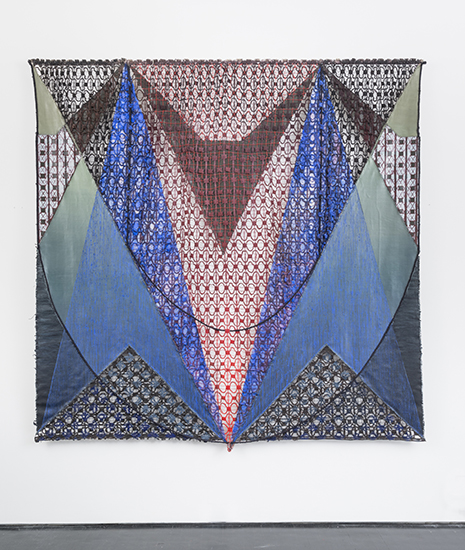
Julia Bland, Spring Shadow, 2015.
Photo courtesy On Stellar Rays.
8. Julia Bland at On Stellar Rays, through Oct. 25.
Julia Bland makes an impressive New York debut with “If You Want to Be Free,” a show of large-scale abstract works that integrate weaving techniques and painting in unique ways. In compositions such as Spring Shadow, Bland suggests an ambiguous space, as layers of painted cloth and woven material overlap. The shadows cast on the wall by the loosely woven materials add another dimension to the proceedings. Mirrored combinations of geometric shapes in bright blue and pale green, on the sides, and deep red in the middle, are reflective almost in the manner of a Rorschach test. Meanwhile, the various cascading triangular shapes seem to float in space.
Sometimes the compositions recall geometric abstractions by Dorothea Rockburne, an artist with whom Bland seems to have a strong affinity. Noon Ashes is another strong work by the California-born Bland, in which a subtle play of gray tones and patterned fabric set against passages of bright yellow geometric shapes, suggests a sculptural depth, like a shallow but dynamic relief.
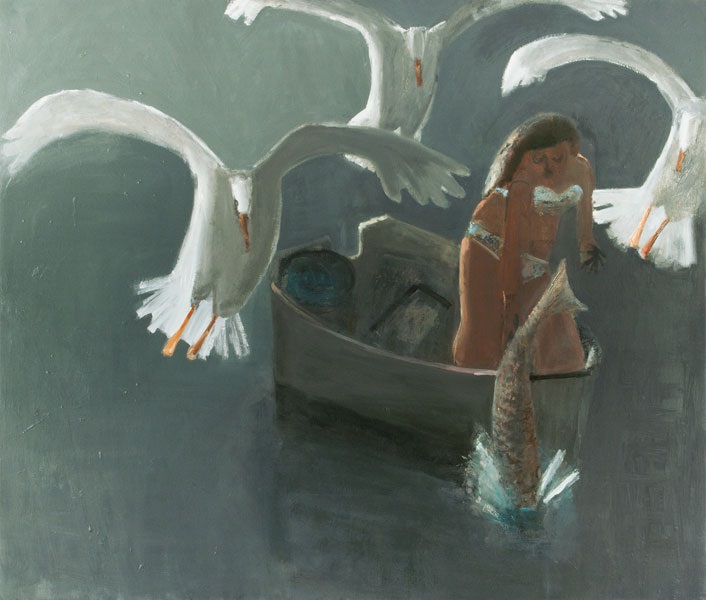
Kyle Staver, Releasing the Catfish, 2011.
Photo courtesy the artist and Steven Harvey Fine Art Projects.
9. Kyle Staver at Steven Harvey Fine Art Projects, through Oct. 11.
Occupying both venues of this Lower East Side gallery, “Tall Tales,” is a rewarding overview of recent paintings by New York artist Kyle Staver. The starting point for her figurative paintings is mythology, although she takes rather extreme departures from the way the stories are told by Ovid, for instance. Pandora shows a highly stylized nude figure desperately trying to escape the grip of huge phallic serpents that she has apparently released into the world.
With subtle lighting effects and a quirky play of spatial depth, Staver has an inimitable painting style. She follows, however, a long tradition of modernist figurative painting centered on Milton Avery, Marsden Hartley, David Park, and most reverently, Matisse. But to that tradition she adds considerable energy and luster. In some of the most outstanding works, she strays from the mythological subjects and evokes the rural life of Minnesota, where she was raised, as in Releasing the Catfish. Here, a bikini-clad young woman in a small rowboat returns a large fish to a lake or river while giant white water fowl fly overhead.
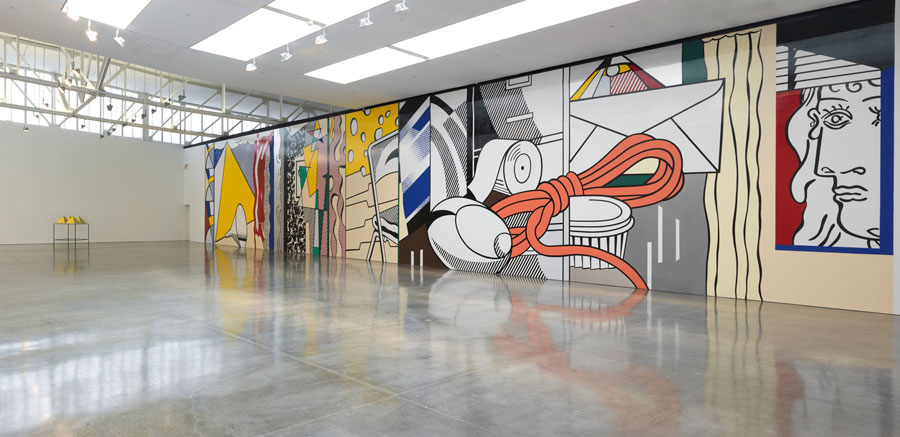
Roy Lichtenstein, Greene Street Mural, 1983/2015.
Photo Rob McKeever, courtesy the artist’s estate and Gagosian Gallery.
10. Roy Lichtenstein at Gagosian, through Oct. 17.
The centerpiece of this riveting show is Greene Street Mural, a vast painting that was originally created by Roy Lichtenstein in 1983, for a show at Leo Castelli Gallery, then located at 142 Greene Street in SoHo. In some respects, the work is a career retrospective, incorporating many of the motifs that preoccupied the Pop art maestro for years. The work was intended to be temporary, and was, in fact, destroyed after the exhibition’s run.
This past summer, Gagosian Gallery commissioned a design firm, in consultation with Lichtenstein’s former studio assistant, and under the auspices of the artist’s estate, to recreate the mural in Chelsea. Based on archival photos of the original, it is a massive undertaking. Stretching some 18 feet by 96 ½ feet, the painting overwhelms visitors, just as Lichtenstein intended. Certain adjustments had to be made to accommodate the Gagosian space. However, having seen the original in my youth, I can attest to the accuracy of the current recreation, as it evokes for me the impact of the original. Like that 1980s monument, the Chelsea mural will also be destroyed after the run of the show, so this reincarnation is a truly special event. To underscore the mural’s importance within Lichtenstein’s oeuvre, the exhibition includes some top-notch representative paintings and sculptures of the period in which many of the mural’s motifs recur.
David Ebony is a contributing editor of Art in America and a longtime contributor to artnet.